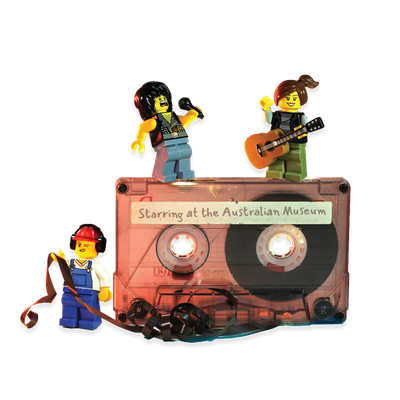Your search returned 23 results
By Page Type
By Tag
- All
- fish (966)
- blog (698)
- fishes of sydney harbour (400)
- First Nations (293)
- Blog (236)
- AMRI (169)
- archives (165)
- Aboriginal and Torres Strait Islander (135)
- Eureka Prizes (131)
- insect (126)
- Ichthyology (125)
- geoscience (109)
- minerals (102)
- climate change (98)
- podcast (94)
- Fish (91)
- Anthropology (89)
- International collections (80)
- Minerals Gallery (78)
- wildlife of sydney (78)
- Labridae (77)
- frog (73)
- gemstone (70)
- history (63)
- photography (63)
- staff (61)
- Mollusca (60)
- gem (59)
- Birds (58)
- education (57)
- Gems (56)
- Indonesia (56)
- AMplify (54)
- shark (54)
- people (53)
- exhibition (51)
- earth sciences (50)
- past exhibitions (50)
- Gobiidae (48)
- Pomacentridae (45)
- sustainability (45)
- Serranidae (44)
- science (43)
- lifelong learning (42)
- Earth and Environmental Science (41)
- Syngnathidae (41)
- Ancient Egypt (40)
- Bali (40)
- bird (40)
- dangerous australians (40)
-
Mineral properties
https://australian.museum/learn/minerals/properties/Minerals can be identified using a number of properties. These include physical and chemical properties such as hardness, density, cleavage and colour, crystallography, electrical conductivity, magnetism, radioactivity and fluorescence.
-
Cutting gemstones
https://australian.museum/learn/minerals/gemstones/cutting-gemstones/Faceted gemstones reveal the inherent qualities of a mineral, such as colour (or lack of it), clarity, fire and brilliance, which might otherwise remain hidden.
-
Geological ore deposits
https://australian.museum/learn/minerals/geological-deposits/geological-ore-deposits/Geological ore deposits are of many different types and occur in all geological environments.
-
Shaping the Earth
https://australian.museum/learn/minerals/shaping-earth/What makes the Earth unique? Where does it fit in the Solar System and, ultimately, the universe? Take a look inside the Earth and find out what it is made from and how it is structured. Look at the processes that shape the Earth.
-
Geological deposits and resources
https://australian.museum/learn/minerals/geological-deposits/Geology is an important part of our economy and industry.
-
Crystal shapes
https://australian.museum/learn/minerals/what-are-minerals/crystal-shapes/Minerals can be identified by the shape of their crystals or crystallography.
-
Man made minerals
https://australian.museum/learn/minerals/what-are-minerals/man-made-minerals/Over 200 minerals are identified as either directly or indirectly made by humans.
-
Metamorphic processes
https://australian.museum/learn/minerals/shaping-earth/metamorphic-processes/Most minerals are only stable at particular temperatures and pressures, so changes in these result in the formation of new minerals.
-
Geological origin of gemstones
https://australian.museum/learn/minerals/gemstones/geological-origin-of-gemstones/Gemstones are formed below the Earth's surface and can sometimes show traces of other minerals, called inclusions.
-
Valuing gemstones
https://australian.museum/learn/minerals/gemstones/valuing-gemstones/Gemstones are valuable because they are a rare and desirable commodity. They also represent time and labour spent on cutting and presentation.
-
Find out more
Tails from the Coasts
Special exhibition
On now![]()
-
Find out more
Burra
Permanent kids learning space
10am - 4.30pm![]()
-
Discover more
RELICS
Special Exhibition
Opens 16 August 2025![]()
-
Discover more
Minerals
Permanent exhibition
Open daily![]()





